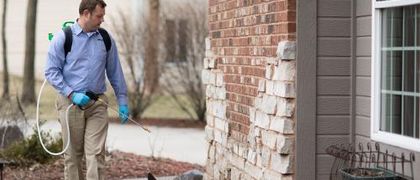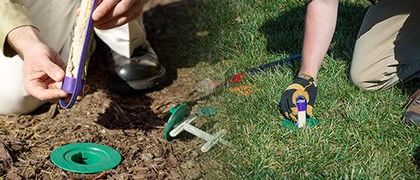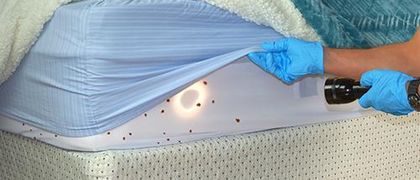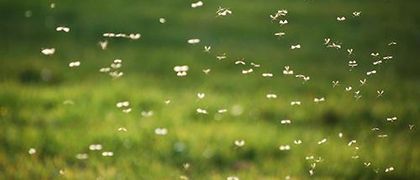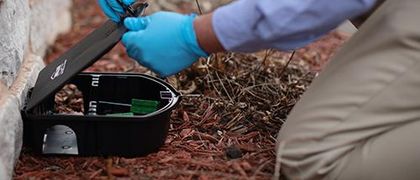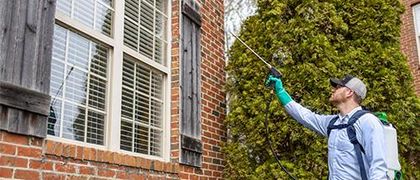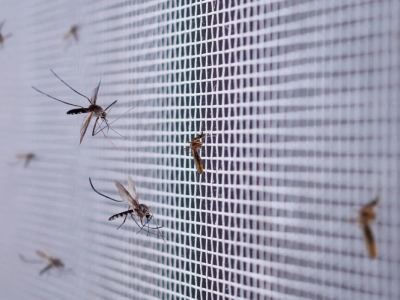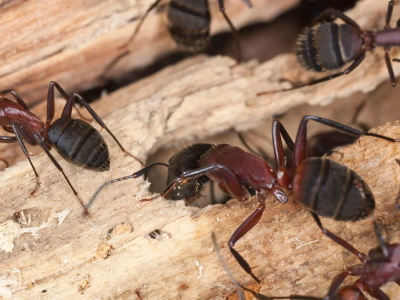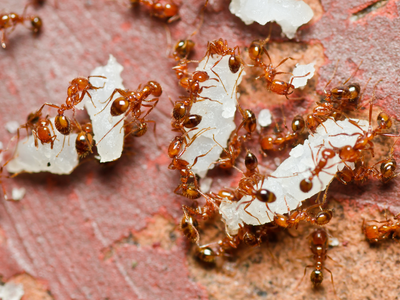What do paper wasps look like?
- Size: 3/4 - 1.5 inches
- Color: Mostly brown with some yellow coloration
- Body Structure: Head, thorax, abdomen, stinger, wings

Characteristics of paper wasps
Paper wasps are semi-social insects that live in colonies that contain workers, queens and males. Each spring, fertilized queens select nesting sites and begin building nests. Eggs are laid singly in cells and hatch into legless grub-like larvae that develop through several stages (instars) before pupating. Cells remain open until developing larvae pupate. Sterile worker wasps assist in building the nest, feeding young, and defending the nest. Each paper wasp nest contains up to 30 adults and in late summer, queens stop laying eggs and the colony soon begins to decline. In the fall, mated female offspring of the queen seek overwintering sites. The remainder of the colony does not survive the winter.
When are paper wasps most active?
What does a paper wasp nest look like?
Paper wasps build and live in paper-like nests made from wood fibers that have been chewed into a pulp. A distinguishing feature is that their nests are shaped like an upside-down umbrella.
Where do paper wasps build nests?
Paper wasps construct nests on tree branches, shrubs, porch ceilings, roof overhangs, eaves, attic rafters, and under decks.
What do paper wasps eat?
Paper wasps loves sugar and will consume ripe fruit, honeydew, and nectar. They feed their young with insects and spiders.
Are paper wasps dangerous?
Paper wasps have the potential to be dangerous as they are capable of stinging multiple times. What's more, they are easily-provoked and very aggressive. Paper wasp stings may cause a mild reaction, but could also produce an allergic and/or life-threatening reaction. If you're stung by a wasp and are experiencing trouble breathing or other symptoms, seek medical care immediately.
Why do I have a paper wasp infestation?
Paper wasps are active spring through late fall and may show up on your property if there are food and water sources including fruit trees, garbage, and standing water.
How can I prevent a wasp problem?
To make your property less appealing to wasps, our pest control specialists recommend the following pest prevention tips:
- Seal all openings on the exterior of the house, even tiny cracks
- Keep food covered when dining outdoors
- Clean and cover your grill after each use
- Do not feed pets outside
- Use exterior trash cans that have tight-fitting lids
- Change exterior lights to yellow bulbs
- Pick up fruit that has fallen off trees right away


Get Help Now!





